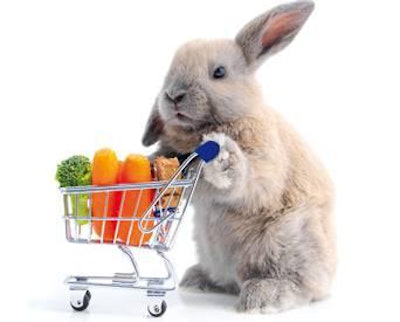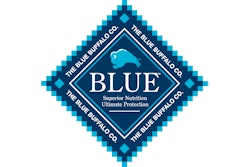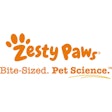
According to IRI sales-tracking data, petfood sales through mass-market outlets (Packaged Facts defines these outlets as supermarkets, drugstores and mass merchandisers excluding Walmart) totaled US$6.5 billion in retail for the 52 weeks ending January 27, 2013, up 0.3% from January 2012. Mass-market outlets lead in petfood sales, with supercenters/mass merchandisers and supermarkets collectively claiming 52% of the market in 2012, with this share split roughly down the middle between the two channels.
Combining chains and independents, the pet specialty channel accounts for most of the balance of petfood sales, at 36%, with the large majority of this share going to the chains, and with PetSmart and Petco accounting for the large majority of those sales. Other channels share the remaining 12% of sales, of which veterinarians and warehouse clubs (Sam’s Club, Costco) are the most important, states the Packaged Facts report "Pet Food in the US, 10th edition" (see Figure 1).
Petfood sales have thankfully recovered from their recessionary low; however, the trick will be to sustain or surpass this rate of growth, since at its current pace pet population growth is not sufficient to drive higher levels of market advancement. According to Packaged Facts, for quite some time much of the dollar growth in the petfood market has come from converting pet owners to higher-priced premium and superpremium foods, but this trend shows signs of hitting a ceiling, including the slow-down in higher-income households’ previously fast growing share of the petfood pie. Also of concern is growing price pressure stemming not just from the likes of Walmart, with its new superpremium natural brand, but also from the migration of major superpremium brands like Wellness and Innova from pet store independents to big boxes, especially since the next stop could be mass.
Let’s look at US retail trends critically and discover more about where and why pet owners are buying petfood. Then, using what we find, you can prepare your products and brands to continue to buoy the industry with proper placement in retail channels and on the shelf.
The pet specialty channel remains a force to be reckoned with, with PetSmart alone claiming 30% of US pet owners as shoppers, followed by Petco at 23% and independent pet stores at 11% (Figure 1). The big two—PetSmart and Petco—continue to represent the primary driving force at retail, boasting combined 2012 sales of US$10.2 billion and approximately 2,500 stores in operation. Both PetSmart and Petco experienced sales increases greater than those they saw during the recession, and their collective sales grew by 9% in 2012, according to Packaged Facts. These two pet specialty retailers account for a major portion of the petfood market despite the appeal of the value-focused mass channels.
Both chains are heavily focused on value-added specialty brands, and both retailers also offer a huge array of pet supplies in-store and online, with premium consumables and services accounting for a growing share of their product mix. Natural products are a major thrust, with Petco fielding its “store-within-store” It’s All Natural departments, and PetSmart calling itself “the most trusted source for natural pet solutions.” Both chains feature a wide array of natural brands, including Nutro, Blue Buffalo, WellPet, Natural Balance, Merrick and Natura. Both companies also continue to view pet care services as a growth area, with annual percentage gains well above the overall company averages, and with offerings including grooming, training and boarding services. In addition to generating revenue, these services entice consumers into the pet superstores, where they are then also likely to stock up on food and treats.
Despite the growing role of veterinarians in the pet nutrition market, veterinarians’ purchasing rate dropped from 15% to 13% during the period, as did the percentage of households procuring them in the Other category (Figure 2). Packaged Facts believes veterinarians’ health expertise and ability to recommend products are a huge plus yet to be exploited to full advantage across much of the pet products market, including the functional petfood segment. Although the petfood retailing picture varies from one veterinary office to the next, for the most part the selection is limited to a few high-grade foods and treats and a small selection of nonfood products displayed in the waiting room. And while most veterinarians carry specialized diets, nutritional therapy is still a relatively new concept. The therapeutic food segment therefore appears capable of sustaining significant growth if traditional veterinarians become more enthusiastic about recommending specialized foods, as holistic veterinarians do.
According to Packaged Facts , the top five US petfood marketers aggressively competing in multiple channels is essential to maintaining overall market dominance. For Nestlé Purina, Mars and Iams, this means representation in virtually all channels—mass-market, pet specialty, veterinary, feed/seed, etc.—at times relying on separate brands but increasingly allowing major brands to cross over. The biggest leap remains from independent pet specialty to mass market. However, many mass-market brands also show up in the two pet specialty big boxes, PetSmart and Petco, which sometimes act as a bridge for brands moving from pet specialty into mass. There is also a fair amount of crossover between gourmet pet specialty and professional channel brands with some brands becoming “vet-channel-specific” by affixing the term “veterinary” to special formulations.
Not quite as diversified in terms of channel penetration are Del Monte and Hill’s. Primarily a mass-market player with brands like 9 Lives and Meow Mix, Del Monte also competes in the pet specialty channel with Nature’s Recipe, with Milk-Bone and other of its treats brands also getting plenty of shelf space in Petco and PetSmart. Hill’s blankets the pet specialty channel with Science Diet and the veterinary channel with Prescription Diet, but eschews mass-market channels completely.
For most petfood marketers outside these top five, the strategic upshot of retailer consolidation—especially with PetSmart, Petco and Walmart garnering so much share—has been the almost mandatory adoption of a channel-exclusive approach to product development and marketing. Channel-specific marketing is now more important than ever, with many marketers emphasizing that their products are available only in the pet specialty channel and, oftentimes, only in independent pet stores.
Petfood and treat retailers have had to return to the basics, focusing on customer service in order to keep existing customers coming back, claims Packaged Facts. As part of this customer service trend, independent stores have tried to provide exemplary product information on items such as petfood. Pet owners are becoming more sophisticated in what they want for their pets. It is no longer enough for stores to promote food or treats that claim to be “healthy.” Increasingly, consumers want to know what’s behind those claims, seeking information about ingredients and efficacy. Accordingly, petfood has done quite well in recent years as stores have turned their attention to consumers looking for answers about what is best to feed their pets.

















